Gravesend Sanatorium
Whitehill Lane, Gravesend, Kent D12 5TD
Medical
dates:
Medical
character:
Isolation. Later, maternity.
In 1886 Gravesend Borough
Council purchased 8 acres of land on the upper part of Whitehill Lane
in order to build an isolation hospital.
The Gravesend Sanatorium opened in 1887 with 10 beds for infectious diseases patients.
In 1919 the Borough Council decided that the smallpox block, a corrugated iron building lined internally with match board, which had been built many years ago but never used for smallpox patients, should be used for diphtheria cases (these had previously been sent to the adjacent Strood Isolation Hospital at a cost of 8 shillings (40p) a day).
By 1923 the Sanatorium had 60 beds - 16 for diphtheria cases, 20 for scarlet fever and 24 for smallpox. Typhoid patients were sent to the Strood Isolation Hospital at a charge of 3 guineas (£3.15) a week.
In 1924 the Borough Council considered that the old corrugated iron block, now in use for diphtheria patients, should be replaced by a brick building, to be located between its site and the administration block. Plans were drawn up for a new ward block with 30 beds (15 male and 15 female), but nothing was done.
The buildings were lit by oil lamps, but an electricity cable had been laid as far as the King's Farm Estate, so it would be possible to convert the Hospital to electricity. It was also suggested that a TB hospital might be built, as there was plenty of land available at the Sanatorium and Strood Isolation Hospital sites.
In 1925 the nursing staff consisted of a Matron, 2 charge nurses and 3 probationers. During the year 202 patients were admitted, of which 12 were for scarlet fever and 190 for diphtheria (of whom 14 died). The scarlet fever block was used for diphtheria patients, and thoroughly disinfected afterwards. A new motor ambulance was acquired.
The Borough Council approached the Strood Rural District Council with the suggestion that a Joint Hospital Board would be more economical than running two separate isolation hospitals. However, the Rural District Council, mindful of the debts which still burdened the Sanatorium, turned the offer down.
In 1928 the new block for diphtheria patients finally opened.
During 1933 some 174 patients were admitted, of whom 81 had diphtheria and 65 scarlet fever. During 1934 there were 154 admissions - 96 for scarlet fever and 54 for diphtheria. In 1935 there were 90 patients (45 with scarlet fever and 22 with diphtheria).
In 1936 an agreement was made with the Strood Rural District Council that emergency infectious diseases cases could be admitted to either Hospital.
During 1937 there were 87 admissions - 47 with scarlet fever, 8 with diphtheria and 10 with septic throat.
In 1938 the nursing staff consisted of a Matron, 2 Staff Nurses, 3 Assistant Nurses, 2 Probationers. A gardener was also employed and an engineer, who looked after the furnaces, the disinfection plant and also assisted in the garden. During the year 57 patients with scarlet fever were admitted, as well as 26 with diphtheria and 4 with smallpox (one of whom died).
At the outbreak of WW2 in 1939 the Sanatorium joined the Emergency Medical Service. However, in the middle of 1940 it was requisitioned by the government for the Royal Air Force, who had also taken over Gravesend Airport. The Borough's infectious diseases patients were sent to Bow Arrow Hospital at a cost of £4 10 shillings (£4.50) a week. Smallpox patients were sent to Capel Hospital in Tunbridge.
One of the buildings became the sick quarters for airmen, and another for W.A.A.F.s.
The Sanatorium did not re-open after the war but the Borough Council met with representatives from the South East Metropolitan Regional Hospital Board and the Medway and Gravesend Hospital Management Committee to request that the premises be converted into a maternity home.
Work began in 1946 to adapt the buildings, but by June 1949, the conversion had not yet been implemented. The Regional Hospital Board, which had taken over the site as part of the NHS, hoped to open 14 beds as soon as work on the administration block was completed. It was hoped that the other buildings could be used for convalescent patients.
The Sanatorium eventually became an NHS maternity home, under the auspices of the Gravesend and North Kent Hospital.
The maternity home closed in 1954.
The Gravesend Sanatorium opened in 1887 with 10 beds for infectious diseases patients.
In 1919 the Borough Council decided that the smallpox block, a corrugated iron building lined internally with match board, which had been built many years ago but never used for smallpox patients, should be used for diphtheria cases (these had previously been sent to the adjacent Strood Isolation Hospital at a cost of 8 shillings (40p) a day).
By 1923 the Sanatorium had 60 beds - 16 for diphtheria cases, 20 for scarlet fever and 24 for smallpox. Typhoid patients were sent to the Strood Isolation Hospital at a charge of 3 guineas (£3.15) a week.
In 1924 the Borough Council considered that the old corrugated iron block, now in use for diphtheria patients, should be replaced by a brick building, to be located between its site and the administration block. Plans were drawn up for a new ward block with 30 beds (15 male and 15 female), but nothing was done.
The buildings were lit by oil lamps, but an electricity cable had been laid as far as the King's Farm Estate, so it would be possible to convert the Hospital to electricity. It was also suggested that a TB hospital might be built, as there was plenty of land available at the Sanatorium and Strood Isolation Hospital sites.
In 1925 the nursing staff consisted of a Matron, 2 charge nurses and 3 probationers. During the year 202 patients were admitted, of which 12 were for scarlet fever and 190 for diphtheria (of whom 14 died). The scarlet fever block was used for diphtheria patients, and thoroughly disinfected afterwards. A new motor ambulance was acquired.
The Borough Council approached the Strood Rural District Council with the suggestion that a Joint Hospital Board would be more economical than running two separate isolation hospitals. However, the Rural District Council, mindful of the debts which still burdened the Sanatorium, turned the offer down.
In 1928 the new block for diphtheria patients finally opened.
During 1933 some 174 patients were admitted, of whom 81 had diphtheria and 65 scarlet fever. During 1934 there were 154 admissions - 96 for scarlet fever and 54 for diphtheria. In 1935 there were 90 patients (45 with scarlet fever and 22 with diphtheria).
In 1936 an agreement was made with the Strood Rural District Council that emergency infectious diseases cases could be admitted to either Hospital.
During 1937 there were 87 admissions - 47 with scarlet fever, 8 with diphtheria and 10 with septic throat.
In 1938 the nursing staff consisted of a Matron, 2 Staff Nurses, 3 Assistant Nurses, 2 Probationers. A gardener was also employed and an engineer, who looked after the furnaces, the disinfection plant and also assisted in the garden. During the year 57 patients with scarlet fever were admitted, as well as 26 with diphtheria and 4 with smallpox (one of whom died).
At the outbreak of WW2 in 1939 the Sanatorium joined the Emergency Medical Service. However, in the middle of 1940 it was requisitioned by the government for the Royal Air Force, who had also taken over Gravesend Airport. The Borough's infectious diseases patients were sent to Bow Arrow Hospital at a cost of £4 10 shillings (£4.50) a week. Smallpox patients were sent to Capel Hospital in Tunbridge.
One of the buildings became the sick quarters for airmen, and another for W.A.A.F.s.
The Sanatorium did not re-open after the war but the Borough Council met with representatives from the South East Metropolitan Regional Hospital Board and the Medway and Gravesend Hospital Management Committee to request that the premises be converted into a maternity home.
Work began in 1946 to adapt the buildings, but by June 1949, the conversion had not yet been implemented. The Regional Hospital Board, which had taken over the site as part of the NHS, hoped to open 14 beds as soon as work on the administration block was completed. It was hoped that the other buildings could be used for convalescent patients.
The Sanatorium eventually became an NHS maternity home, under the auspices of the Gravesend and North Kent Hospital.
The maternity home closed in 1954.
Present status (April 2011)
In 1956 the building that had been the sick quarters for R.A.F. servicemen was converted into a public house. It opened in 1957 as The Stork at Rest. The building opposite, once sick quarters for W.A.A.F.s, is now sheltered housing.
Since the 1950s the area has been completely redeveloped with new housing and new roads.
Update: January 2016
The pub later became an Indian restaurant. It closed in June 2012. The building is now vacant and awaiting redvelopment.
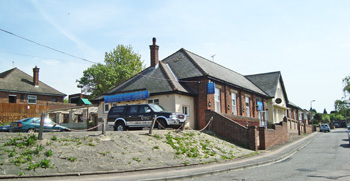
One of the surviving Sanatorium buildings - now The Stork at Rest, at the corner of Dobson Road and Stacey Close (above and below).
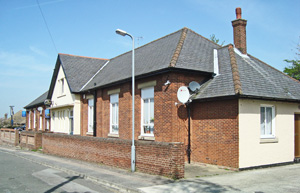
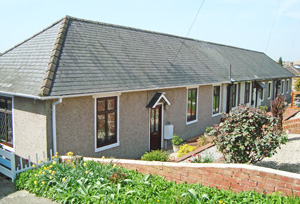
The building opposite the pub, on the other side of Stacey Close, is now sheltered housing (above and below).
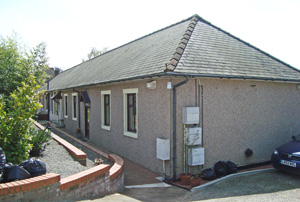
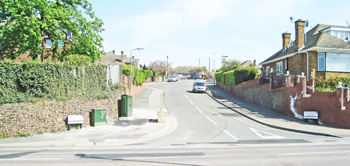
Looking down Dobson Road from Valley Drive, the Sanatorium was on the right and the Strood Isolation Hospital was on the left.
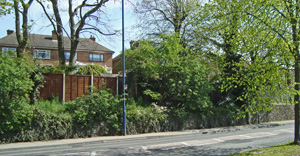
The area has been completely redeveloped with new housing.
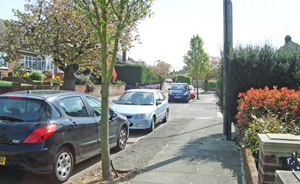
Looking down Read Way towards the site of the Sanatorium.
http://forebears.co.uk
http://ukga.org
http://wtp2.appspot.com
www.closedpubs.co.uk
www.discovergravesham.co.uk (1)
www.discovergravesham.co.uk (2)
www.dover-kent.com
www.geograph.org.uk
www.kenthistoryforum.co.uk (1)
www.kenthistoryforum.co.uk (2)
www.kenthistoryforum.co.uk (3)
Return to home page